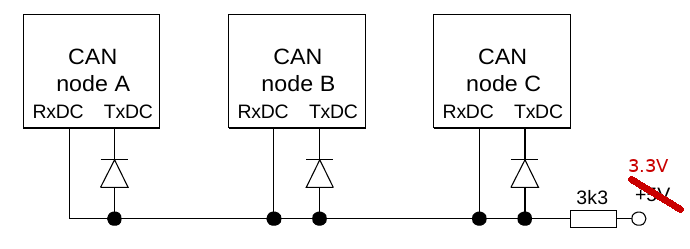mjs513
Senior Member+
From my perspective this is probably the best choice if you want to include CANFD. As you said earlier it would allow for compatibility with future versions of the T4. Personally, I would prefer to include CANFD. 7 vs 8 Serial ports isn't so bad. Think I've only managed to use 4 or 5 so far. From the manual ref for the 1060 chip that defragster posted it will be able to support both CAN2.0B and CANFD formats.For CAN2, the pins share with Serial1, 2 PWM, and 2 XBAR access pins. This could be abandoned, but then we'd have only 7 serial ports instead of 8. Maybe that's not so bad? But people do use serial ports. Getting all 8 ports (5 on the breadboard pins, 3 on the bottom) seems pretty attractive.
As an aside I do the new versions of the ST NUCLEO-H743Z will have CANFD available. Found this out before I found the CANFD adapter board that can be used with Teensy's.


